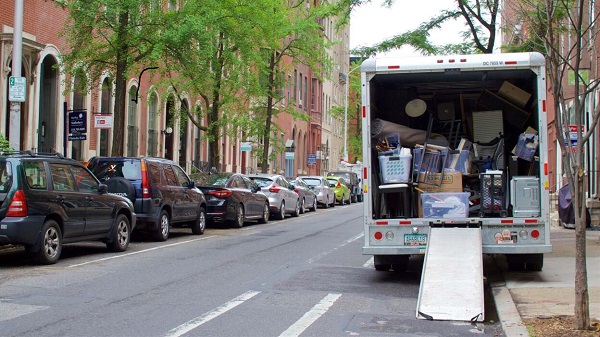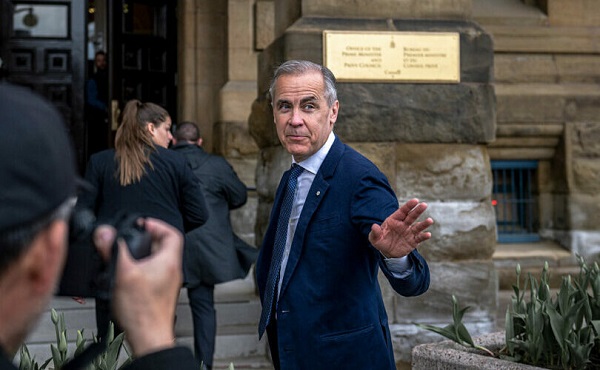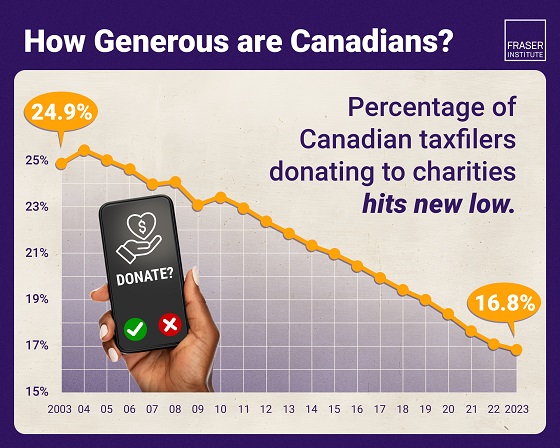Economy
One Solution to Canada’s Housing Crisis: Move. Toronto loses nearly half million people to more affordable locations

From the Frontier Centre for Public Policy
By Wendell Cox
The largest CMA, Toronto, had by far the most significant net internal migration loss at 402,600, Montreal lost 162,700, and Vancouver lost 49,700.
Canadians are fleeing overpriced cities to find more affordable housing. And restrictive urban planning policies are to blame.
Canadians may be solving the housing crisis on their own by moving away from more expensive areas to areas where housing is much more affordable. This trend is highlighted in the latest internal migration data from Statistics Canada.
The data covers 167 areas comprising the entire nation, including Census Metropolitan Areas (CMAs), which have populations from 100,000 to seven million. It also includes the smaller Census Agglomerations (CAs), which have a core population of at least 10,000, as well as areas outside CMAs and CAs in each province and territory, which are referred to as “largely rural areas.”
Long-standing migration trends have been virtually reversed. Larger cities (CMAs) now see the highest loss of net internal migrants, while smaller cities (CAs) are experiencing solid gains. Between 2019 and 2023, Canada’s CMAs lost 273,800 net internal migrants to smaller areas, including CAs and largely rural areas. This contrasts sharply with the previous five-year period (2014 to 2018) when CMAs saw only a 1,000-person loss.
So, where did these people go? A significant portion – 108,100 – moved to CAs, which captured 39 per cent of the CMA losses. This is triple that of the previous five years (2014 through 2018).
However, the most notable shift occurred in largely rural areas, which gained 165,700 net internal migrants, representing 61 per cent of CMA losses. This is a dramatic increase compared to the 33,700 net loss in the previous five years.
Among the 167 areas, the migration data is stunning.
The areas experiencing the greatest net internal migration are outside CMAs and CAs. The largely rural area of Ontario saw the biggest gain, with a net increase of 78,300 people – nearly 40 times the number from the previous five years. Meanwhile, rural Quebec placed second, with a net gain of 76,200 people, more than 10 times the increase in the prior five years. The Calgary CMA ranked third (and first among CMAs) at 42,600, followed by the Ottawa Gatineau CMA (Ontario and Quebec) at 36,700 and the Oshawa CMA at 34,900.
The largest CMA, Toronto, had by far the most significant net internal migration loss at 402,600, Montreal lost 162,700, and Vancouver lost 49,700. Outside these CMAs, nearly all areas posted net gains.
People have also started moving to the Maritimes. The Halifax CMA tripled its previous gain (21,300). In New Brunswick, Moncton nearly quadrupled its gain (7,000). Modest gains were also made in Fredericton and Saint John as well as in Charlottetown in Prince Edward Island.
Meanwhile, housing affordability in Canada’s largest CMAs has become grim. Toronto’s median house price to median household income has doubled in less than two decades. Vancouver’s prices have tripled relative to incomes in five decades. Montreal’s house prices nearly doubled relative to incomes over two decades.
These CMAs (and others) have housing policies typical of the international planning orthodoxy, which seeks to make cities denser. In effect, they have declared war against “urban sprawl,” trying to stop any material expansion of urbanization. These urban containment policies, which include greenbelts, agricultural reserves, urban growth boundaries and compact city strategies, are associated with the worst housing affordability. Land prices are skewed upward throughout the market. Demand continues to increase ahead of incomes, but the supply of low-cost suburban land, so crucial to controlling costs, is frozen.
Regrettably, some areas where people have fled are also subject to urban containment and housing affordability has deteriorated rapidly. Between 2015 and 2022, prices in Ontario CMAs London, Guelph, Brantford and St. Catharines have about doubled. BC’s Fraser Valley and Vancouver Island have seen similar increases. Those moving to these areas are ahead financially, but the rapidly rising house prices are closing opportunities.
There are proposals to restore housing affordability, though none tackle the urban containment policies associated with the price increases. Indeed, we have not found a single metropolitan area where housing affordability has been restored with the market distortions of the intensity that have developed in Toronto, Vancouver and Montreal (not in our Demographia International Housing Affordability report or elsewhere). Such markets have become unsustainable for most new entrant households because they cannot afford to live there.
Housing is not a commodity. Households have varying preferences, from ground-oriented housing (detached and townhomes) to high-rise condos. Indeed, a growing body of literature associates detached housing with higher total fertility rates. According to Statistics Canada, Canadians have favoured lower densities for decades, a trend that continued through the 2021 Census, a trend that continued through the 2021 Census, according to Statistics Canada.
With governments (virtually around the world) failing to maintain stable and affordable housing markets, it’s not surprising people are taking matters into their own hands. Until fundamental reforms can be implemented in the most expensive markets, those seeking a better quality of life will have no choice but to leave.
First published in the Financial Post.
Wendell Cox is a senior fellow at the Frontier Centre for Public Policy and the author of Demographia International Housing Affordability.
Business
The world is no longer buying a transition to “something else” without defining what that is

From Resource Works
Even Bill Gates has shifted his stance, acknowledging that renewables alone can’t sustain a modern energy system — a reality still driving decisions in Canada.
You know the world has shifted when the New York Times, long a pulpit for hydrocarbon shame, starts publishing passages like this:
“Changes in policy matter, but the shift is also guided by the practical lessons that companies, governments and societies have learned about the difficulties in shifting from a world that runs on fossil fuels to something else.”
For years, the Times and much of the English-language press clung to a comfortable catechism: 100 per cent renewables were just around the corner, the end of hydrocarbons was preordained, and anyone who pointed to physics or economics was treated as some combination of backward, compromised or dangerous. But now the evidence has grown too big to ignore.
Across Europe, the retreat to energy realism is unmistakable. TotalEnergies is spending €5.1 billion on gas-fired plants in Britain, Italy, France, Ireland and the Netherlands because wind and solar can’t meet demand on their own. Shell is walking away from marquee offshore wind projects because the economics do not work. Italy and Greece are fast-tracking new gas development after years of prohibitions. Europe is rediscovering what modern economies require: firm, dispatchable power and secure domestic supply.
Meanwhile, Canada continues to tell itself a different story — and British Columbia most of all.
A new Fraser Institute study from Jock Finlayson and Karen Graham uses Statistics Canada’s own environmental goods and services and clean-tech accounts to quantify what Canada’s “clean economy” actually is, not what political speeches claim it could be.
The numbers are clear:
- The clean economy is 3.0–3.6 per cent of GDP.
- It accounts for about 2 per cent of employment.
- It has grown, but not faster than the economy overall.
- And its two largest components are hydroelectricity and waste management — mature legacy sectors, not shiny new clean-tech champions.
Despite $158 billion in federal “green” spending since 2014, Canada’s clean economy has not become the unstoppable engine of prosperity that policymakers have promised. Finlayson and Graham’s analysis casts serious doubt on the explosive-growth scenarios embraced by many politicians and commentators.
What’s striking is how mainstream this realism has become. Even Bill Gates, whose philanthropic footprint helped popularize much of the early clean-tech optimism, now says bluntly that the world had “no chance” of hitting its climate targets on the backs of renewables alone. His message is simple: the system is too big, the physics too hard, and the intermittency problem too unforgiving. Wind and solar will grow, but without firm power — nuclear, natural gas with carbon management, next-generation grid technologies — the transition collapses under its own weight. When the world’s most influential climate philanthropist says the story we’ve been sold isn’t technically possible, it should give policymakers pause.
And this is where the British Columbia story becomes astonishing.
It would be one thing if the result was dramatic reductions in emissions. The provincial government remains locked into the CleanBC architecture despite a record of consistently missed targets.
Since the staunchest defenders of CleanBC are not much bothered by the lack of meaningful GHG reductions, a reasonable person is left wondering whether there is some other motivation. Meanwhile, Victoria’s own numbers a couple of years ago projected an annual GDP hit of courtesy CleanBC of roughly $11 billion.
But here is the part that would make any objective analyst blink: when I recently flagged my interest in presenting my research to the CleanBC review panel, I discovered that the “reviewers” were, in fact, two of the key architects of the very program being reviewed. They were effectively asked to judge their own work.
You can imagine what they told us.
What I saw in that room was not an evidence-driven assessment of performance. It was a high-handed, fact-light defence of an ideological commitment. When we presented data showing that doctrinaire renewables-only thinking was failing both the economy and the environment, the reception was dismissive and incurious. It was the opposite of what a serious policy review looks like.
Meanwhile our hydro-based electricity system is facing historic challenges: long term droughts, soaring demand, unanswered questions about how growth will be powered especially in the crucial Northwest BC region, and continuing insistence that providers of reliable and relatively clean natural gas are to be frustrated at every turn.
Elsewhere, the price of change increasingly includes being able to explain how you were going to accomplish the things that you promise.
And yes — in some places it will take time for the tide of energy unreality to recede. But that doesn’t mean we shouldn’t be improving our systems, reducing emissions, and investing in technologies that genuinely work. It simply means we must stop pretending politics can overrule physics.
Europe has learned this lesson the hard way. Global energy companies are reorganizing around a 50-50 world of firm natural gas and renewables — the model many experts have been signalling for years. Even the New York Times now describes this shift with a note of astonishment.
British Columbia, meanwhile, remains committed to its own storyline even as the ground shifts beneath it. This isn’t about who wins the argument — it’s about government staying locked on its most basic duty: safeguarding the incomes and stability of the families who depend on a functioning energy system.
Resource Works News
Business
Brutal economic numbers need more course corrections from Ottawa

From the Fraser Institute
By Matthew Lau
Canada’s lagging productivity growth has been widely discussed, especially after Bank of Canada senior deputy governor Carolyn Rogers last year declared it “an emergency” and said “it’s time to break the glass.” The federal Liberal government, now entering its eleventh year in office, admitted in its recent budget that “productivity remains weak, limiting wage gains for workers.”
Numerous recent reports show just how weak Canada’s productivity has been. A recent study published by the Fraser Institute shows that since 2001, labour productivity has increased only 16.5 per cent in Canada vs. 54.7 per cent in the United States, with our underperformance especially notable after 2017. Weak business investment is a primary reason for Canada’s continued poor economic outcomes.
A recent McKinsey study provides worrying details about how the productivity crisis pervades almost all sectors of the economy. Relative to the U.S., our labour productivity underperforms in: mining, quarrying, and oil and gas extraction; construction; manufacturing; transportation and warehousing; retail trade; professional, scientific, and technical services; real estate and rental leasing; wholesale trade; finance and insurance; information and cultural industries; accommodation and food services; utilities; arts, entertainment and recreation; and administrative and support, waste management and remediation services.
Canada has relatively higher labour productivity in just one area: agriculture, forestry, fishing and hunting. To make matters worse, in most areas where Canada’s labour productivity is less than American, McKinsey found we had fallen further behind from 2014 to 2023. In addition to doing poorly, Canada is trending in the wrong direction.
Broadening the comparison to include other OECD countries does not make the picture any rosier—Canada “is growing more slowly and from a lower base,” as McKinsey put it. This underperformance relative to other countries shows Canada’s economic productivity crisis is not the result of external factors but homemade.
The federal Liberals have done little to reverse our relative decline. The Carney government’s proposed increased spending on artificial intelligence (AI) may or may not help. But its first budget missed a clear opportunity to implement tax reform and cuts. As analyses from the Fraser Institute, University of Calgary, C.D. Howe Institute, TD Economics and others have argued, fixing Canada’s uncompetitive tax regime would help lift productivity.
Regulatory expansion has also driven Canada’s relative economic decline but the federal budget did not reduce the red tape burden. Instead, the Carney government empowered cabinet to decide which large natural resource and infrastructure projects are in the “national interest”—meaning that instead of predictable transparent rules, businesses must answer to the whims of politicians.
The government has also left in place many of its Trudeau-era environmental regulations, which have helped push pipeline investors away for years. It is encouraging that a new “memorandum of understanding” between Ottawa and Alberta may pave the way for a new oil pipeline. A memorandum of undertaking would have been better.
Although the government paused its phased-in ban on conventionally-powered vehicle sales in the face of heavy tariff-related headwinds to Canada’s automobile sector, it still insists that all new light-duty vehicle sales by 2035 must be electric. Liberal MPs on the House of Commons Industry Committee recently voted against a Conservative motion calling for repeal of the EV mandate. Meanwhile, Canadian consumers are voting with their wallets. In September, only 10.2 per cent of new motor vehicle sales were “zero-emission,” an ominous18.2 per cent decline from last year.
If the Carney government continues down its current path, it will only make productivity and consumer welfare worse. It should change course to reverse Canada’s economic underperformance and help give living standards a much-needed boost.
-

 Business2 days ago
Business2 days agoAlbertans give most on average but Canadian generosity hits lowest point in 20 years
-

 Bruce Dowbiggin2 days ago
Bruce Dowbiggin2 days agoCarney Hears A Who: Here Comes The Grinch
-

 Censorship Industrial Complex2 days ago
Censorship Industrial Complex2 days agoOttawa’s New Hate Law Goes Too Far
-

 National2 days ago
National2 days agoCanada’s free speech record is cracking under pressure
-

 Fraser Institute1 day ago
Fraser Institute1 day agoClaims about ‘unmarked graves’ don’t withstand scrutiny
-

 Business2 days ago
Business2 days agoTaxpayers Federation calls on politicians to reject funding for new Ottawa Senators arena
-

 Digital ID1 day ago
Digital ID1 day agoCanada considers creating national ID system using digital passports for domestic use
-

 Energy1 day ago
Energy1 day agoMeet REEF — the massive new export engine Canadians have never heard of






